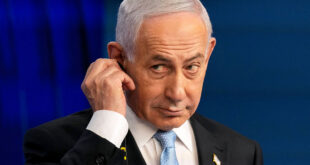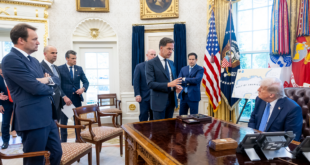Israel has provided Azerbaijan with its new weapon – the Harpy system, which is capable of destroying Russia’s S-300 and even S-400 air defense systems, and this news is presented by a number of media as a sensation.
It is assumed that these Israeli weapons will quickly resolve the military conflict in favor of Azerbaijan. At the same time, it turns out that Russia’s air defense systems, which are in service in Armenia, “will not be able to withstand the Israeli novelty.”
According to some experts, this means not only a quick victory for Azerbaijan, but also a loss of interest in the well-known Russian air defense systems on the world arms market. Is that correct?
To begin with, it should be noted that Azerbaijan has so far not confirmed the supply and presence of “Harpy” by Israel. Israel has also not confirmed this “news”. In reality, the Azerbaijani army really needs such weapons, because it is Armenia’s air defense systems that do not allow the Azerbaijani Air Force to make full use of its capabilities. According to some reports, Azerbaijan has already lost seven military helicopters and one plane in the past four days.
It is known that we are talking about a mobile complex, which is a starter for several unmanned aerial vehicles (UAVs) with its own warhead, operating on the principle of kamikaze. That is, the task of such a non-returnable device is to fly to the target, fall on it and detonate it with its warhead.
Earlier, it was reported that Israel was testing such systems in Syria at a time when some Russian air defense systems were active. Now such tests obviously have to continue during the armed conflict between Azerbaijan and Armenia. For this reason, it is argued that it is possible that such a system was indeed delivered to the Azeris by Tel Aviv.
“The Harpia mobile complex is supposed to be operated with the task of searching for signals on specific radars, ie the S-300 or S-400,” said in an interview the head of the anti-aircraft missile forces of the Air Force Special Forces Command. of Russia Colonel Sergei Khatilev. “The manufacturer shall position such unmanned aerial vehicles as ammunition which are not manufactured for a specific customer but are manufactured for sale to all countries for different purposes only.”
As for the specific unmanned aerial vehicles from the Harpia complex, the expert explains, its devices have optical-electronic guidance and can operate at a distance of up to 400 km. The Israelis have sent them to the Armenian-Azerbaijani conflict zone for testing, the expert added, in order to check once again all the frequencies they have already registered in the past during the operations of the Russian air defense systems in Syria.
It is quite possible, adds Colonel Khatilev, “that these Israeli unmanned aerial vehicles will be able to operate not only in search of the S-300 and S-400 air defense systems, but also in search of the Buk complex, although it is not yet confirmed whether this so”.
Given the fact that optoelectronic guidance is used, the drone must be located just above the position area of the air defense complex. That is, he must first be able to get there, which is not easy at all. If we talk about the Russian army, it has extensive experience in combating unmanned aerial vehicles in the Middle East and Syria. But it is quite another matter that the Armenian army has no such experience.
However, the expert is sure that the situation is not as critical as some would like to present. According to him, such a drone is used directly as ammunition that falls on an object and explodes, destroying it. To do this, the drone must approach the S-300 at a low altitude, dive on it and enter the station or the antenna lane directly.
“Destroying an object not from a certain distance, but directly physically, is a much more difficult task,” explains Sergei Khatilev. “That is, the S-300 complexes must be covered with short-range air defense systems – “Buk” complexes, missile and cannon complexes “Pantsir”. Even portable MANPADS of the Strela type can be used for protection”.
The Russian commander does not think that something terrible would have happened to the Armenian air defense if the system in question had been delivered to Azerbaijan. Armenians will simply be forced to cover up their S-300 systems normally, conduct aerial reconnaissance and destroy the Harpy drone system in time.
The situation in Nagorno-Karabakh escalated on September 27, active clashes are taking place in the disputed territory. Martial law was introduced in Azerbaijan and Armenia, and mobilization was announced. Both sides reported killed and wounded, including civilians. In Baku, they announced the control of several Karabakh villages and strategic heights. Yerevan also reports about the shelling of the territory of Armenia.
Nagorno-Karabakh conflict
Azerbaijan and Armenia have been in conflict over Nagorno-Karabakh since February 1988, when the Nagorno-Karabakh Autonomous Region announced its withdrawal from the Azerbaijan SSR.
During the armed conflict in 1992-1994, the Azerbaijani side lost control of Nagorno-Karabakh and the seven areas adjacent to it. Since 1992, negotiations have been conducted within the framework of the OSCE Minsk Group on a peaceful settlement of the conflict. The group is led by co-chairs – Russia, USA and France.
In 1994, Azerbaijan, Armenia and the unrecognized Nagorno-Karabakh Republic, through the mediation of Russia, signed the Bishkek Armistice Protocol. At the same time, military operations did not stop there, which periodically renewed.
The most significant exacerbation of the conflict was the four-day war of 2016. Then hundreds of soldiers on both sides became victims.
Russian Foreign Minister Sergei Lavrov, during a meeting with the President of Azerbaijan last year, called for a rhetoric that would go against the fundamental principles endorsed by both sides and enshrined in the UN Charter and the Helsinki Final Act when resolving the situation around Nagorno-Karabakh.
At the same time, the head of the Russian Foreign Ministry admitted that much more needs to be done to achieve a long-term political settlement.
 Eurasia Press & News
Eurasia Press & News



